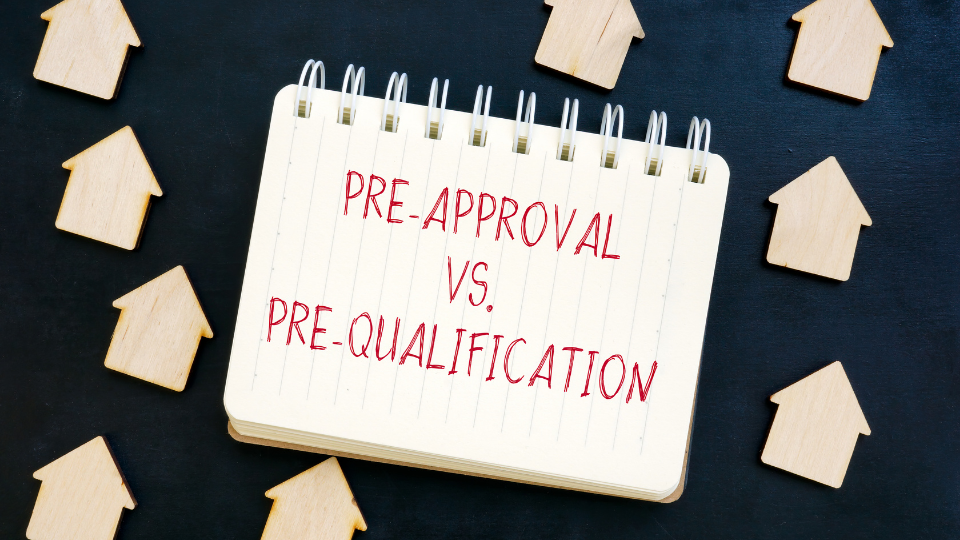Purchasing a home is a milestone that involves one of the most significant financial decisions most people will ever make. As with any major decision, clarity and preparation are key. Two of the most commonly heard terms in the early stages of the mortgage process—prequalification and preapproval—are often used interchangeably, causing considerable confusion among first-time and experienced homebuyers alike. Yet, there are essential differences between the two that can drastically impact a buyer’s credibility, negotiation power, and overall experience in the real estate market.
In this comprehensive guide, we will unravel these differences and explore why understanding the nuances of mortgage prequalification and preapproval can give you a strategic advantage in your homebuying journey. If you’ve been wondering whether to go for prequalification or preapproval first—or whether you need both—this article will shine a light on these questions and help you make an informed decision. Equipped with this knowledge, you can navigate the complex world of home financing with confidence and clarity.
The homebuying journey is an exciting yet potentially overwhelming process, especially for those who are new to it. One of the earliest challenges buyers face is determining how much mortgage they can qualify for—a task that typically leads them to consider mortgage prequalification and mortgage preapproval. Although these two processes are sometimes lumped together or casually substituted for one another, they each serve distinct purposes.
Common Confusion Between Mortgage Preapproval and Prequalification
The confusion often stems from the fact that both preapproval and prequalification aim to give buyers an idea of how much money they might be able to borrow from a lender. Both processes precede the formal loan application and final mortgage approval. Because of these similarities, it’s easy to mix them up or to assume that one is as good as the other. However, understanding the differences could spare you from possible missteps—such as assuming you have secured loan approval when you really haven’t.
The Aim of This Article
By shedding light on the mechanics, requirements, and effects of each process, we aim to demystify mortgage prequalification and preapproval. Our goal is to help you understand how each step can fit into your unique financial picture and real estate goals. You’ll learn what lenders look for, the documentation you may need, and how much weight each process carries in terms of negotiation.
The Importance of Understanding These Concepts
For many people, buying a home is the single largest purchase they’ll ever make, and the mortgage terms can last anywhere from 15 to 30 years. A strong grasp of the financing side is crucial to ensure you don’t lose out on a home you love due to complications or misunderstandings. Being prequalified or preapproved can improve your standing with sellers, let you know your budgetary boundaries, and give you a competitive advantage in hot real estate markets.
In the following sections, we will dive deep into these two essential terms, highlighting their differences and exploring how they influence your homebuying journey.
Mortgage Prequalification: The First Step
Prequalification is often considered the entry point for homebuyers exploring their mortgage options. If you’re in the early stages of your home search—or if you’re only casually considering the possibility of purchasing a home—prequalification can be an excellent way to gain preliminary insight into your borrowing capacity.
What Is Mortgage Prequalification?
Mortgage prequalification is an informal assessment that helps prospective buyers understand how much money they might be eligible to borrow from a mortgage lender. It involves a relatively light evaluation of your financial situation, typically using self-reported or quickly reviewed data.
While some lenders may require minimal documentation—such as pay stubs, bank statements, or an overview of your credit score—others might rely primarily on verbal or online questionnaires. The primary purpose here is to provide an estimate of your potential loan amount and monthly mortgage payments.
The Process of Getting Prequalified
- Initial Inquiry: You reach out to a lender—often through an online form or phone call—to express interest in prequalification.
- Providing Basic Financial Data: The lender will ask questions about your income, employment history, existing debts, and available down payment.
- No or Minimal Credit Check: In many cases, the lender may not run a full credit check. If they do, it’s usually a soft inquiry that doesn’t heavily impact your credit score.
- Quick Estimate: Based on the information you provide, the lender will offer a rough ballpark figure—like a preliminary loan amount range—for which you might qualify.
The Level of Investigation During Prequalification
Because prequalification is largely an estimate, lenders aren’t typically digging deep into your finances. They rely heavily on the numbers you provide. This means there’s a margin of error—sometimes a considerable one—between a prequalification estimate and your final approved mortgage amount. For example, if your credit report shows discrepancies or if your documented income is lower than what you initially estimated, the final loan offer could be significantly less than your prequalified amount.
Effects on a Buyer’s Perception and Negotiations
Prequalification is a fantastic tool for buyers to get an approximate price range of homes they can realistically consider. It prevents you from setting your sights on properties that are out of reach and helps guide your preliminary budget planning.
However, when it comes to dealing with sellers and real estate agents, prequalification doesn’t carry as much weight. Sellers are aware that a prequalification letter is just an estimate; no extensive verification of finances or credit has been done. As a result, it doesn’t typically make you stand out in a competitive real estate market. It’s more of a confidence-booster for you, the buyer, rather than a hard proof of your financial viability.
Mortgage Preapproval: A Closer Look
While prequalification gives a quick snapshot of your financial situation, mortgage preapproval provides a more detailed, verified view. If you’re serious about buying a home and want to demonstrate solid credibility to sellers, mortgage preapproval is the way to go.
Defining Mortgage Preapproval
Mortgage preapproval is a more rigorous process wherein a lender commits to lending you a certain amount of money, subject to specific conditions. Unlike prequalification, a preapproval carries more weight because the lender conducts a thorough investigation of your financial status. This process requires documentation and validation, resulting in a stronger indication of what you can truly afford and how reliable you are as a borrower.
The Preapproval Process and Required Documentation
- Formal Application: You’ll typically begin by filling out an application with a lender—either online or in-person—providing detailed information on your income, employment, assets, and debts.
- Documentation Submission: You will likely be asked to provide hard evidence of your financials. This typically includes:
- Recent pay stubs or employment verification
- W-2 forms or tax returns from the past two years
- Bank statements (checking, savings, or investment accounts)
- Statements of other assets or liabilities, if relevant
- Credit Check: The lender will run a hard inquiry on your credit, which can affect your credit score slightly. However, this is a necessary step to accurately gauge your creditworthiness.
- Financial Review: Underwriters or specialized mortgage professionals will scrutinize your documents to assess your debt-to-income ratio (DTI), credit history, savings, and overall stability.
- Conditional Approval: If everything checks out, you receive a preapproval letter stating the amount you’re qualified to borrow, along with any conditions—such as pending property appraisal or final verification of employment before closing.
Depth of Investigation
The level of scrutiny during preapproval can be rigorous. It’s not just about stating what you earn or how much you owe; lenders want documentation to back it up. This thorough review often includes verifying past employment, analyzing patterns in your bank statements, and ensuring all major financial changes are accounted for. While this may feel invasive or tedious, it serves an important purpose: a lender doesn’t want to approve a loan that a borrower cannot responsibly handle.
How Preapproval Enhances Negotiating Power and Credibility
Having a preapproval letter in hand can significantly improve your position in a competitive housing market. It tells sellers—and their agents—that you have been vetted by a reputable lending institution and are unlikely to experience financing hurdles later on. As a result, many sellers prefer offers from buyers who are preapproved, even if the purchase price is slightly lower than what another buyer might offer without proof of financing. It shows you’re a serious, qualified contender who is likely to close the deal on time.
Preapproval vs. Prequalification: The Key Differences
While both processes are related to understanding your mortgage affordability, they differ in several key aspects: documentation, level of scrutiny, negotiation impact, and lender commitment. Let’s break down these differences more explicitly.
Documentation
- Prequalification: Often based on self-reported or minimal documentation. The lender may not require pay stubs, tax returns, or a deep dive into assets.
- Preapproval: Requires formal documentation, such as W-2 forms, recent pay stubs, full credit reports, and bank statements.
Lender Investigation
- Prequalification: Basic or no credit checks, with minimal verification of the data you provide.
- Preapproval: Thorough credit checks and meticulous examination of your financial background, including your debt-to-income ratio and asset verification.
Negotiation Impact
- Prequalification: Helpful for your own budgeting but not particularly influential when negotiating with sellers.
- Preapproval: A significant advantage in negotiations, as it demonstrates that a lender has conditionally committed to financing your loan.
Credibility and Reliability
- Prequalification: Seen as a preliminary, informal step. Sellers may look at it with skepticism, knowing it’s not a guarantee of funding.
- Preapproval: Carries substantial credibility. It reassures sellers that you’re financially prepared to follow through on your offer.
In practical terms, preapproval often holds much more weight. It’s a stronger indicator of your readiness to purchase and signals that a deal is more likely to go smoothly. If you’re heading into a competitive market, taking that extra step of getting preapproved can make all the difference between having your offer accepted or losing out to another buyer.
How to Choose Between Preapproval and Prequalification
Given the differences laid out above, you may wonder which route is most suitable for your situation. The answer often depends on how far along you are in the homebuying process, your financial preparedness, and the real estate market conditions you face.
Assessing Your Financial Situation
- If You’re Just Exploring: If you’ve only started thinking about homeownership and want a rough idea of what you might afford, a prequalification can serve as a low-commitment starting point. It allows you to set reasonable expectations without diving into an extensive review.
- If You’re Confident in Your Finances: If you already have a sense of your budget, a stable job, decent savings, and you’re ready to make a serious offer, you’re better off going straight for a preapproval. This will save time later and give you a competitive edge.
Real Estate Market Conditions
- Hot/Competitive Market: In a market where properties receive multiple offers shortly after listing, having a preapproval letter could make or break your chances of securing the home. Sellers prefer working with buyers who have shown they can finance the purchase.
- Balanced/Slow Market: If homes tend to stay on the market longer and sellers are more flexible, you might get away with just a prequalification initially. However, you should still seek preapproval as your interest in a specific property ramps up.
Scenarios Where One May Be More Beneficial Than the Other
- Prequalification Is Beneficial If:
- You’re a first-time buyer wanting a general sense of affordability.
- You’re at the stage of casually browsing listings without a timeline for purchasing.
- You’re hesitant to go through a full credit check or formal process until you’re closer to making a decision.
- Preapproval Is Beneficial If:
- You’re ready to move forward in a competitive environment and want every possible advantage.
- You’re looking at homes and planning to make an offer soon.
- You anticipate needing to demonstrate serious financial backing to stand out from other buyers.
Tips for Improving Your Chances of Getting Preapproved
- Check Your Credit Report: Before you apply for preapproval, obtain copies of your credit reports and dispute any errors. A better credit score can lead to more favorable loan terms.
- Lower Your Debt-to-Income Ratio: Pay down credit card balances, car loans, or student loans if possible. Lenders look at how much of your monthly income goes toward debt.
- Save for a Down Payment: A larger down payment can improve your loan terms and reduce your monthly mortgage payment.
- Maintain Steady Employment: Lenders favor borrowers who have a stable employment history, typically at least two years in the same line of work.
- Avoid Large Purchases or New Credit Lines: Right before or during your preapproval process, it’s best not to take out new loans or make big purchases that might affect your credit score.
The Impact of Preapproval and Prequalification on Your Home Buying Journey
Each step you take in the mortgage qualification process can shape your homebuying experience in significant ways. By strategically using prequalification and preapproval to your advantage, you can navigate the market more confidently and potentially secure better deals.
Prequalification’s Role in Your Buying Journey
- Initial Budgeting: Prequalification helps you establish a baseline for the type of homes you can consider. It can motivate you to clean up your finances if you find the amount you could qualify for is lower than expected.
- Goal Setting: Knowing your rough price range early on allows you to set realistic goals. You can decide whether you need to wait a bit longer to save for a higher down payment or address any financial weaknesses.
Preapproval’s Role in Your Buying Journey
- Streamlining House Hunting: Once you know the exact amount you’re preapproved for, you can target your home search efficiently. Time spent viewing houses outside your price range is minimized.
- Building Trust With Sellers: In negotiations, a preapproval letter can speak volumes. It signals to the seller that you’re a serious buyer with verified finances. In a competitive scenario, this can tip the scales in your favor.
- Faster Closing Process: When you’re preapproved, much of the legwork required for your final mortgage approval is already done. Pending a successful appraisal and final checks, your closing may go more quickly.
Advantages of Being Preapproved in a Competitive Market
In many real estate markets, sellers can receive multiple offers in a matter of days, if not hours. A preapproval sets your offer apart because it suggests fewer obstacles to closing. This advantage can also enable you to act quickly and confidently, placing bids without worrying that your financing might fall through at the last moment. This peace of mind can reduce stress and help ensure you don’t miss out on your dream home.
Empowering Buyers to Make Informed Decisions
Understanding the difference between prequalification and preapproval isn’t just about pleasing the seller; it’s about giving yourself the knowledge and leverage to make informed financial decisions. Armed with a clear understanding of your budget, you can avoid heartbreak over unaffordable properties and ensure you don’t stretch yourself too thin. Moreover, you can plan your life around realistic monthly payments and better prepare for closing costs, moving expenses, and potential renovations.
Conclusion
Navigating the homebuying process can be both exhilarating and complex. Mortgage prequalification and preapproval are essential stepping stones on this journey, yet their distinctions are often glossed over. By now, you should have a clear understanding of how prequalification serves as an initial, informal gauge of your borrowing power—useful for budget-setting and preliminary conversations. Preapproval, on the other hand, involves a rigorous financial check, offering you a more reliable assessment of what you can afford and strengthening your credibility with sellers.
Why Distinguishing Between the Two Matters
Knowing whether you need a prequalification or a preapproval at any given stage can save you time, effort, and possibly money. If you’re casually browsing the housing market, a prequalification might suffice. However, once you’re serious about making an offer—especially in a competitive environment—a preapproval is your strongest weapon. It not only gives you a firm budget but also communicates to sellers that you’re a trustworthy buyer.
Benefits of an Informed Decision
- Enhanced Negotiation Power: Armed with a preapproval, you’ll have a solid standing in negotiations.
- Streamlined Process: You can move faster through closing when the bulk of the financial vetting is already done.
- Confidence in Your Position: Eliminating guesswork around your budget prevents overreach and disappointment.
Approach Your Homebuying Journey With Confidence
Ultimately, the true value lies in knowing where you stand financially and using that knowledge to make prudent decisions. Whether you opt for prequalification, preapproval, or both, the important thing is to stay informed and prepared. By understanding the real difference between these two processes, you’re better equipped to find a mortgage that suits your goals and secure the home you’ve always wanted.
Remember, a strong foundation in the basics of mortgage qualifications can set the tone for a smoother, more successful homebuying experience. Sellers and real estate agents appreciate working with informed buyers, and lenders prefer dealing with borrowers who comprehend the responsibilities of homeownership. So take that first step—whether it’s prequalification or preapproval—knowing you’re laying the groundwork for a future filled with the joys and freedoms of owning your own home. With clarity about your financing, you can focus on what truly matters: finding the perfect property to call your own.




